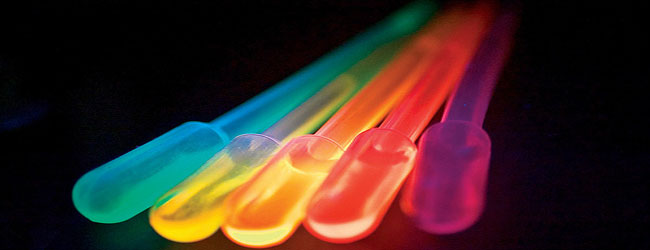Ever tried to turn the volume all the way up on a small radio or small stereo system? (Hopefully you have not tried it with earphones in!)
Notice how, after some point, the sound didn’t get any louder- it just got more distorted? That’s because you’ve hit the ceiling of your machine’s dynamic range. It’s called ‘clipping’ distortion, because what should be the peak of sound intensity (amplitude) gets clipped by the inability of the amplifier to produce more current. After some point, the soft passages of music sound loud, and the loud passages do not sound any louder- they just sound more distorted. It’s basically a horrible thing to do to your music, your equipment and your ears!
What does that noise look like?
Audio signals are not the only ones that can be mistreated like this; you can easily abuse images the same way. You can turn up the gain of your microscope camera, photomultiplier or whatever detector you are using, so high that you get clipping. So what does clipping actually look like in an image? Flat, featureless colors, of the highest intensity. From a certain level of brightness and upwards, all features look equally bright- ‘saturated’. The same thing can happen at the other end of the scale; below a certain threshold of brightness, all features can be made to look equally dark (black).
These general rules are true whatever the nature of the signal we wish to record, and whatever the means of recording. Whether it be a pulsating needle engraving a phonograph record, a microphone converting sound waves to electrical current to cause magnetic changes on a tape, a photographic emulsion, a digital audio or image recording setup. The issues related with dynamic range and signal-to-noise ratio are not just a function of the user settings (gain setting, for instance, as mentioned above) but also of the hardware involved.
What exactly is Dynamic Range?
Dynamic range can be expressed in decibel, in bits, or as an exponent (e.g. 100 db = 17 bits = 105). The way of digital encoding of different signal levels is directly reflected on the final dynamic range of the recorded data. The dynamic range of digitally encoded data is a measure of the range of discrete amplitudes that the system can resolve. Limitations to this resolution can come from two sources:
(1) The first is the detector itself. Different types and different models of detectors (be they CCD, CMOS, PMT, Avalanche, Hybrid etc.) have different dynamic range properties.
(2) The second is the analogue-to-digital (A/D) converter. A proper matching between the two has to be made, to allow discrimination of as many gray scale steps as possible. Some detectors can have very high dynamic range values, and the appropriate converter is required, so that this dynamic range is not wasted. While the dynamic range cannot be larger than the effective grayscale level resolution of the A/D converter, it can be smaller if, for example, there is saturation in the photodetector.
Bit Depth
Bit depth is a related concept that refers to the binary range of possible grayscale values utilized by the A/D converter to translate analog image information into discrete digital values capable of being read and analyzed by a computer. For example, 8-bit A/D converters have a binary range of 28 or 256 possible discrete values, while a 12-bit converter has a range of 212 or 4,096 discrete values, and a 16-bit converter has 216, or 65,536 discrete values. The bit depth of the A/D converter determines the size of the gray scale increments, with higher bit depths corresponding to a greater range of useful image information available from the camera- if the camera is giving this information to begin with, that is.
In the second part, we’ll take a look at Intrascene dynamic ranges, High Dynamic Range and the quantitation of image data.







